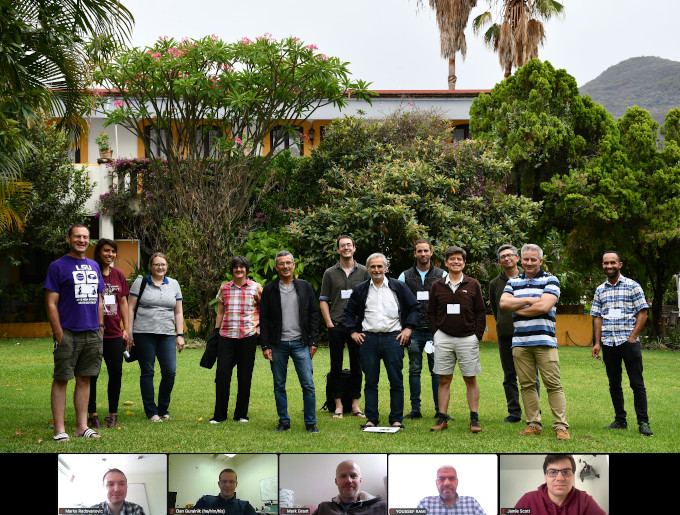Topological Complexity and Motion Planning (22w5182)
Organizers
Daniel Cohen (Louisiana State University)
Jesus Gonzalez (Cinvestav)
Lucile Vandembroucq (Universidade do Minho)
Description
The Casa Matemática Oaxaca (CMO) will host the "Topological Complexity and Motion Planning" online workshop, from May 29 - June 3, 2022.
Teaching a robot to move about on an empty football field is easy. There is exactly one line joining the robot's starting and finishing points, and the robot can be instructed to move from start to finish along this line. This instruction scheme is robust in the sense that nearby starting and finishing points give rise to similar instructions. If the robot is attached to a circular track, teaching it to move is harder. The instructions ``move along the shortest arc'' lead to confusion if the starting and finishing points are precisely opposite one another, as the robot doesn't know whether to move in the clockwise or counterclockwise direction. Choosing one of these two, say, the instructions ``move clockwise'', yields confusion when the starting and finishing points are the same. From these instructions, the robot does not know if it should simply stay at the start/finish point, or move in a less efficient manner, looping around the circle once or twice or\ldots
The problem can be solved by giving different instructions for different pairs of starting and finishing points. If the points are precisely opposite one another, instruct the robot to move clockwise. Otherwise, instruct it to move along the shortest arc. The number, 2, of different types of robust instructions required is the topological complexity of the circle, providing a measure of how difficult it is to teach the robot how to navigate, that is, how complicated the robot motion planning problem is on the circle. The mathematical studies of these notions, for robot domains known as topological spaces, with shapes far more complex than those of a football field or circular track, are active areas of research in the field of applied topology. The objectives of this workshop are to bring together scientists from all around the world working on diverse aspects of motion planning and topological complexity so as to provide exposure to potentially new perspectives and foster collaboration, to prepare young scientists for work in these rich and fascinating areas of research, and to establish directions for future work and interaction in these areas.
The Casa Matemática Oaxaca (CMO) in Mexico, and the Banff International Research Station for Mathematical Innovation and Discovery (BIRS) in Banff, are collaborative Canada-US-Mexico ventures that provide an environment for creative interaction as well as the exchange of ideas, knowledge, and methods within the Mathematical Sciences, with related disciplines and with industry. The research station in Banff is supported by Canada's Natural Science and Engineering Research Council (NSERC), the U.S. National Science Foundation (NSF), Alberta's Advanced Education and Technology, and Mexico's Consejo Nacional de Ciencia y Tecnología (CONACYT). The research station in Oaxaca is funded by CONACYT






